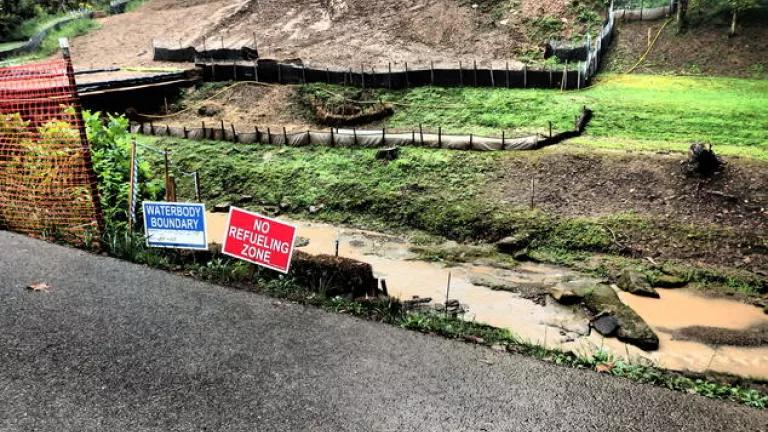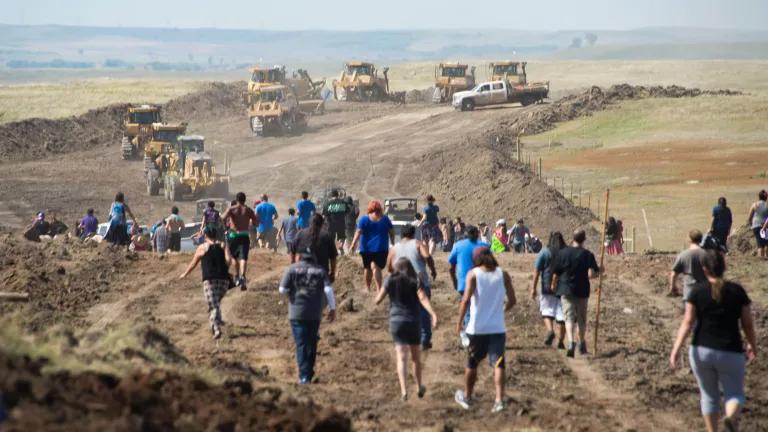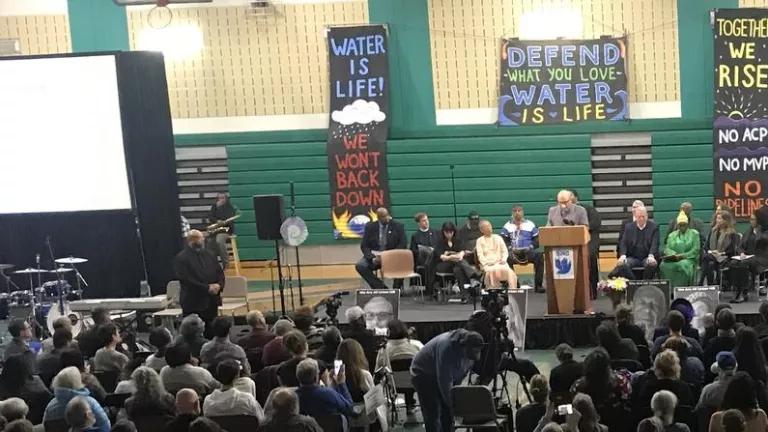More Qs than As at EPA Oil and Gas Wastewater Meeting
The U.S. Environmental Protection Agency (EPA) held a public meeting earlier this week to seek input on its Study of Oil and Gas Extraction Wastewater Management. The problem? It seems that this process of gathering “public input” is merely a box-checking exercise, so EPA can claim that it sought broad input while really listening to just one stakeholder group: the oil and gas industry and powerful interests that support them.
In May 2018, EPA announced that it was initiating a study to evaluate approaches to managing wastewater from oil and gas extraction. At the time, it wasn’t clear what prompted the study or what its goal was, but that didn’t stop EPA from launching a confusing and seemingly backwards process of seeking public input on little more than a few sentences about what it was doing.
This bizarre process naturally raised suspicions, given the Trump administration’s drive to grant every fossil fuel industry wish as fast as possible. Information has slowly trickled out over time, with EPA now admitting that a goal of the study is to determine “whether support exists for potential federal regulations that may allow for broader discharge of treated produced water to surface waters.” In other words, the oil and gas industry wants to dump its wastewater into our rivers and lakes, and Trump’s EPA is supposed to figure out how to let them do it.
The vast majority of oil and gas wastewater is currently managed by injecting it back underground, but disposal formations are reaching capacity in some places, such as the Permian Basin in New Mexico and Texas, where drilling is reaching historic levels. That’s why industry wants greater freedom to dump their waste into surface waters. However, the ability to do so is not hampered by technology or regulation, but by cost. In most places, injecting wastewater back underground rather than reusing or treating it for surface disposal is the lowest cost option.
Moreover, there are still huge unknowns about the potential impacts of surface disposal of oil and gas wastewater – in particular how to ensure it will be treated properly so it doesn’t harm the environment, wildlife, agriculture, or human health. Oil and gas industry wastewater can contain a wide range of naturally occurring and intentionally added chemicals that may be toxic, radioactive, or otherwise hazardous. Making matters worse, neither the federal government nor any state require comprehensive disclosure of all chemicals used in the oil and gas production process. Studies have also shown that many chemicals used have not been characterized and therefore have unknown environmental and public health profiles. And even if industry did disclose all the chemicals it uses, testing the wastewater to determine its safety is still challenging, given that 1) testing protocols don’t exist for many chemicals industry uses, and 2) added chemicals react with the rocks and fluids underground to create new byproducts that we don’t yet fully understand or even know to test for.
You don’t have to look far to see that the industry is panicking about what to do with all this waste. Instead of taking responsibility, their solution is to get EPA to rollback regulations governing surface disposal. Doing so would be completely counter to EPA’s mission “to protect human health and the environment.”
EPA’s sincerity in seeking broad public input is also called into question by the hoops that had to be jumped through for those seeking to attend the meeting. Security was tighter than at an airport – meeting attendees were made to stand in a single-file line outside in the heat, while one person at a time went through security. Shoes and watches had to be removed. Meeting attendees were delayed as a result and the meeting didn’t start on time. Women were required to be escorted to the restroom by a female EPA staffer. These go well beyond any security measures in place under previous administrations and are intimidating even for those experienced with public meetings. Attendees who pre-registered to speak at the meeting were assigned a specific time. However, during the meeting, EPA staff moved up the assigned speaking times, meaning that anyone who waited to arrive until their previously assigned time slot may have missed their chances to speak.
Notably, the nature of and timeframe for EPA’s decision-making process was not provided in writing or made available on its website, so only those who could attend the public meeting have the benefit of this information, which is as follows:
- EPA expects to release a white paper on its findings regarding surface discharge of oil and gas wastewater in the first quarter of 2019;
- Shortly after the white paper is made public, EPA will accept input, although it is unclear whether it will undergo formal notice and comment; and
- EPA expects to make a decision on whether to make any rule changes in the summer of 2019.
EPA must change course to be fully transparent about what prompted this “study” and, at a minimum, guarantee additional opportunities for formal public comment once the study is finished and well before even contemplating whether to revise or rescind regulations intended to protect the environment and human health. EPA’s job is to protect the American public, not facilitate greater oil and gas production and industry profits.



